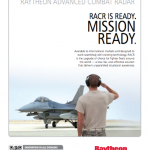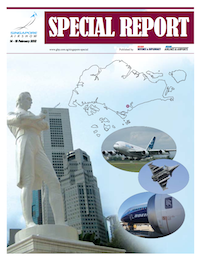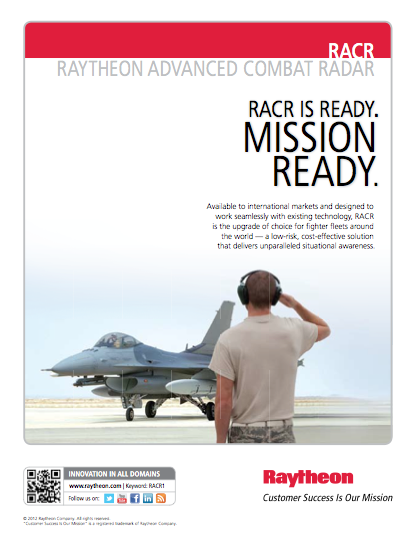
“Raytheon AESA radars are the only combat proven AESA radars currently in production. They have logged more operational flight hours and have the largest installed customer base of any AESA system in the world,” said Mark Kula, vice president of Tactical Airborne Systems for Raytheon Space and Airborne Systems.

RACR incorporates the latest generation of proven AESA technology from the U.S. Air Force F-15E radar modernization program now in production, as well as from other U.S. Air Force and Navy AESA programs. Specifically designed to meet F-16 customer needs, RACR is cost-effective, highly reliable, and successfully flight tested on the F-16 platform.
Compact, lightweight and sized for multiple fighter aircraft, RACR features 90 percent commonality with combat proven Raytheon AESA radars. This allows customers to benefit from the economies of scale derived from Raytheon’s multiple AESA production lines. It also enables long-term sustainability and maintainability of the system.
Advanced and Proven Technology
Raytheon has been an innovator in the field of AESA radars. The company was the first to design, develop and field an AESA radar system for a tactical fighter in 2000 for the United States Air Force. The first to have AESA technology tested in combat. The first to pass 250,000 AESA flight hours. The first to retrofit AESA radars onto multiple aircraft: F/A-18E/F, F-15C, and F-15E.
Two of the advantages of Raytheon’s AESA technology are significantly increased overall radar performance and greater situational awareness; the ability to conduct simultaneous air-to-air and air-to-ground missions, more effective tracking of widely spaced targets and unique savings due to low required maintenance costs.
RACR increases interoperability with coalition forces by delivering a common radar picture and common logistics, while enhancing the aircraft’s overall multirole mission capabilities. Its versatility bridges the capability gap that current radars will face as more sophisticated threats evolve. Raytheon is thoroughly familiar with the F-16 aircraft, its systems and capabilities. The company provides the mission computer (the heart of the jet), electronic warfare and weapon systems as well as a new col- or display, a key enabler for future sensor upgrades. Leveraging Raytheon technology and expertise, the F-16 is well equipped to handle current and future threats.
Multirole Force Multiplier
Raytheon continues to lead AESA innovation through strategic roadmaps designed to meet emerging requirements. For future upgrades and software maintenance, RACR customers will realize cost savings from common hardware and software used across multiple AESA product lines at the company’s advanced radar manufacturing facility. Offering proven effectiveness across three international theaters, Raytheon AESAs are available now for customers who need growth-oriented, next generation capabilities for their airborne platforms.




















